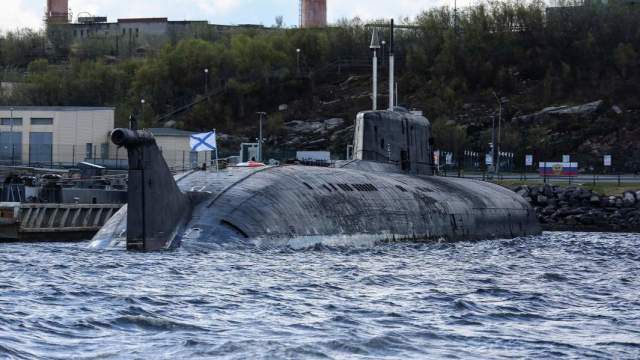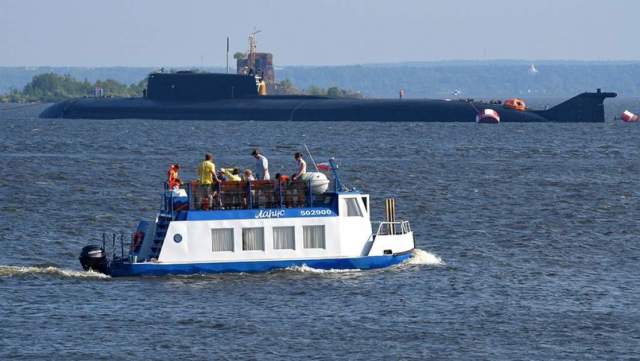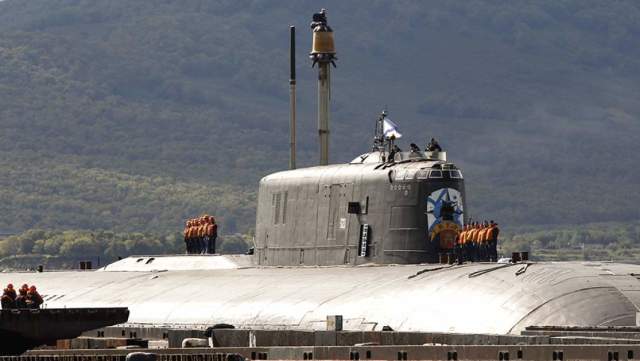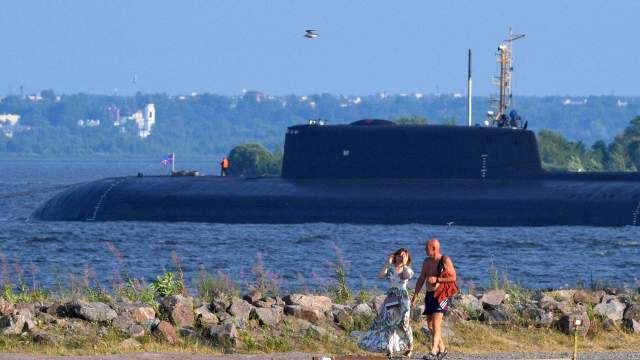Submarines of project 949 began to work out the cover of a strategically important route
The Pacific Fleet of the Russian Navy conducted exercises of nuclear submarines in the area of the Northern Sea Route, a source in the Russian Defense Ministry told Izvestia. The maneuvers took place in the spring and early summer. The military tested the capabilities of Project 949 submarines during operations in this region. As the Arctic ice melts and navigation along the Northern Sea Route develops, the tasks of covering this route will become more urgent, experts say. Submarines of Project 949 are considered the most effective hunters of ships — both surface and underwater. They have torpedoes in their arsenal, as well as a whole battery of supersonic cruise missiles.
On the water and under the water
The capabilities of Project 949 submarines for operations in the area of the Northern Sea Route (NSR) were tested this year, sources told Izvestia in the military department. In the spring and early summer, Pacific submariners conducted exercises in this region. The submarines operated in the waters of the NSR, and also performed surfacing in an ice environment. Now the plans of the Ministry of Defense are similar maneuvers of the ships of the Northern Fleet.
Submarines of Project 949 are one of the latest developments of the Soviet shipbuilding industry. The series was built in the 80s – 90s. Today, three of its representatives — Tver, Omsk and Tomsk — are part of the Pacific Fleet. Two more — "Smolensk" and "Eagle" — are serving in the Northern Fleet. Project 949 submarines were originally designed to combat surface ship formations. They carry torpedoes and Granite missiles on board.

Nuclear submarine "Smolensk" at the berth in the city of Severomorsk during naval exercises of the forces of the Northern Fleet of the Russian Federation
Image source: Photo: RIA Novosti/Pavel Lviv
In the Pacific Fleet, Project 949 submarines are part of the 10th Submarine Division, and in the Northern Fleet they are part of the 11th Division. It is noteworthy that both of these compounds are officially called "anti-aircraft". Among their tasks, in addition to fighting aircraft carrier formations, is the destruction of the enemy's amphibious forces, hunting for his sea caravans. And not so long ago, the crews of the Project 949 boats began to practice missile strikes on ground targets.
Apparently, the boats of the Pacific Fleet practiced operations to protect the eastern section of the Northern Sea Route, military historian Dmitry Boltenkov believes.
— Apparently, they trained anti—submarine and anti-ship operations in the North Pacific Ocean, - he told Izvestia. — The task, most likely, was to prevent the fleets of unfriendly countries from entering the waters. The Northern Fleet will work out the protection of the western section of the NSR during the exercises. The boats of Project 949 are equipped with Granite missiles, which are quite powerful and accurate weapons. It is possible that in the future they will be upgraded, after which the arsenal will be replenished with Kalibr and Onyx missiles.

Nuclear submarine "Eagle" on the raid in Kronstadt on the eve of the Navy Day
Image source: Photo: RIA Novosti/Alexander Galperin
The area of ice cover in the Arctic Ocean will decrease in the near future. As a result, the threat from the enemy's surface forces, including aircraft carriers, will increase, military expert Vasily Kashin told Izvestia.
— It can be assumed that in preparation for this prospect, the command of the Russian fleet begins preparing Project 949 submarines for operations in the Arctic. Covering the Northern Sea Route is a very important task. Control over this highway is one of the most important advantages of Russia. In addition, a variety of attacks from the United States can come from the northern direction. And if in the future, as the climate changes, the forces of the American fleet appear there, this direction will need to be covered.
Attention to the North
Since the middle of the last decade, Russia has been actively creating military infrastructure along the Northern Sea Route and in general in the polar latitudes. The Joint Strategic Command "Northern Fleet" last year received the status equal to the military district. Units of coastal missile systems "Bal" and "Bastion", anti-aircraft missile systems are located on the Arctic islands. About two dozen airfields have been repaired or reconstructed. All-weather year-round runways have been built on the Alexandra Land islands of the Frans-Joseph Land archipelago and Kotelny on the Novosibirsk Islands. Interceptor fighters are on constant duty at the northern airfields.
ru/video/embed/1370871" width="100%" height="366" allowfullscreen style="border-style: none;max-width: 650px;" allow="autoplay; encrypted-media; fullscreen">
In addition to the deployment of units in the Arctic on a permanent basis, the transfer of forces is regularly practiced in the region. So, in November last year, the Iskander-M tactical missile systems were alerted and transported by transport aircraft to Novaya Zemlya, where they conducted firing drills.

Nuclear submarine "Tver" at the berth at the base of the 16th Red Banner Squadron of submarines of the Pacific Fleet in Vilyuchinsk
Image source: Photo: RIA Novosti/Alexey Kudenko
In 2021, a detachment of ships of the Northern Fleet conducted maneuvers, during which the amphibious landing along the Northern Sea Route was practiced. In different areas, the landing of marine infantry units and Arctic motorized infantry units took place.
In addition to the military component, there are others in the development of the Arctic regions. President Vladimir Putin said last year that Russia is creating an infrastructure related to nature protection in the Arctic.
In addition, a base is being created for the Ministry of Emergency Situations, which can be used to rescue people on the waters or to protect the environment. According to the head of state, as the climate changes and with the commissioning of the newest icebreakers, navigation along the Northern Sea Route will become year-round.
Roman Kretsul
Alexey Ramm

